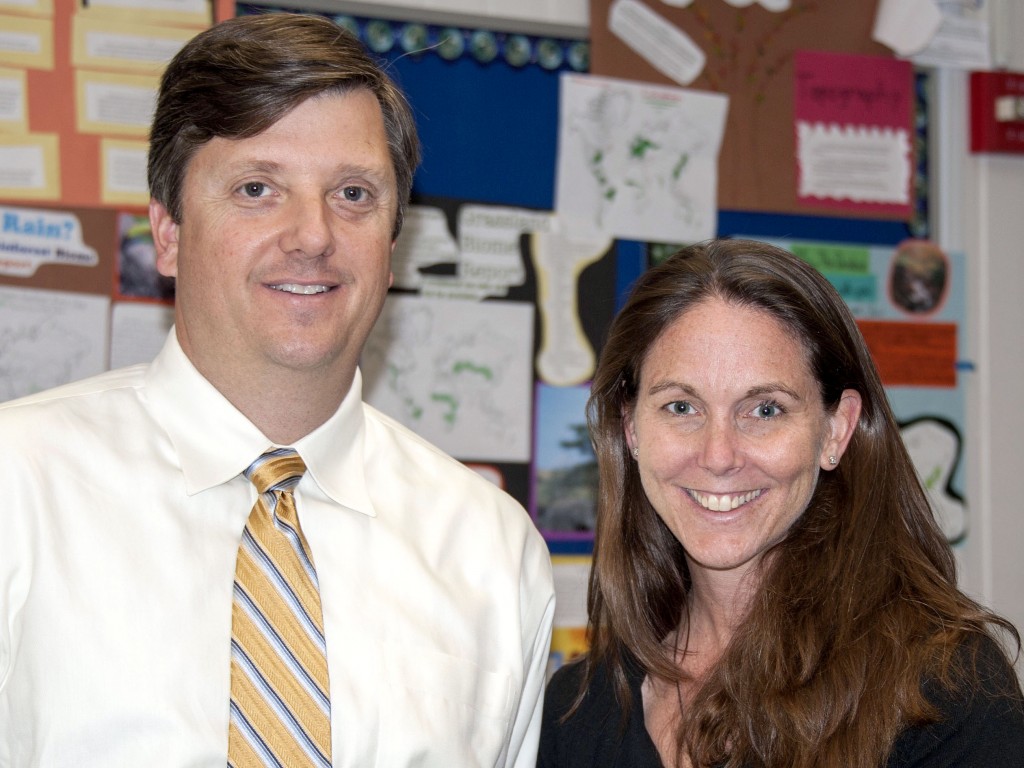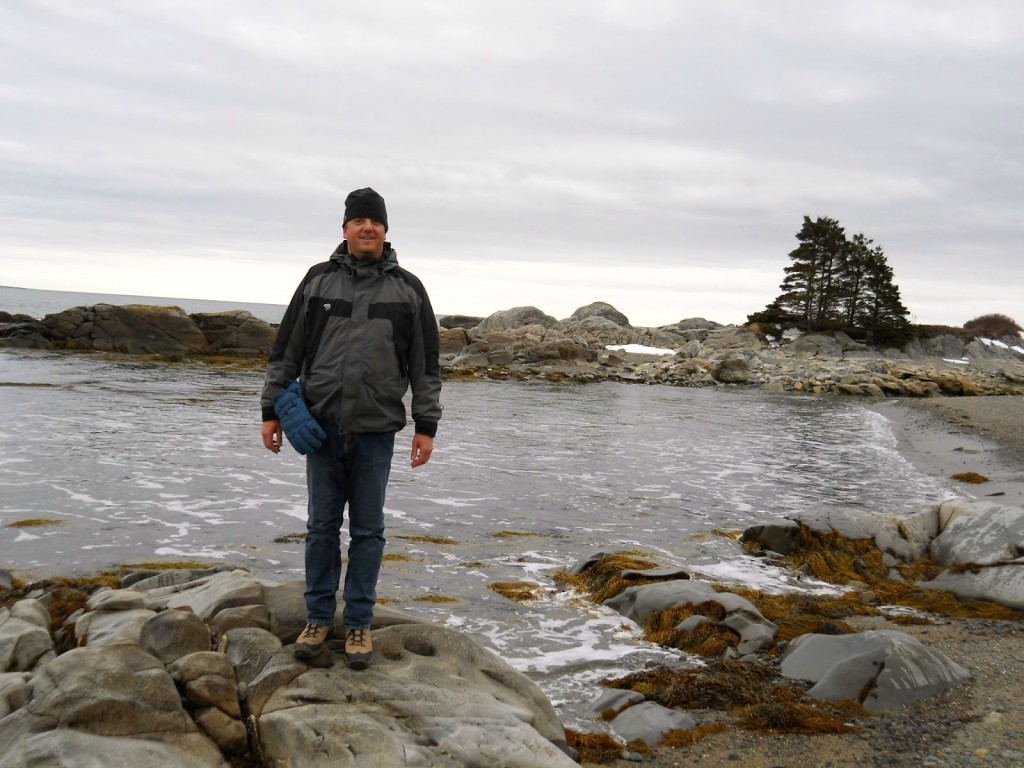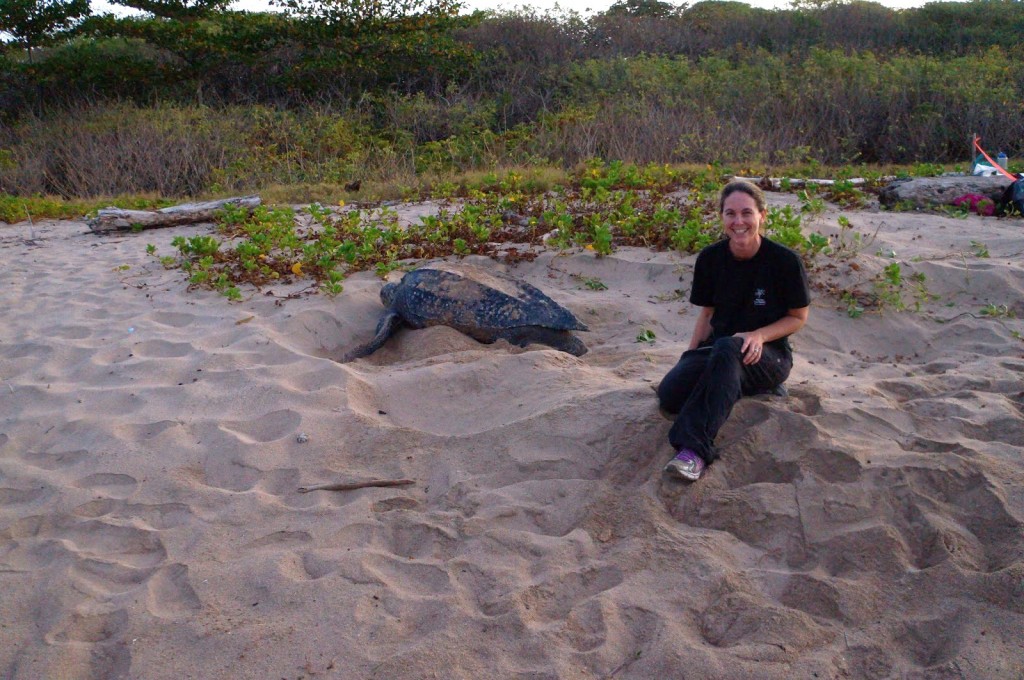
Two Harbor Day teachers recently took memorable trips to different parts of the globe, all while getting excited about science.
English teacher Susan Johnson and science teacher Jean-Paul Rimlinger went to Costa Rica and Nova Scotia, respectfully, as part of an Earthwatch Expedition.
Earthwatch is the world’s largest environmental nonprofit volunteer organization. Based in Boston, Mass., its mission is “to engage people worldwide in scientific field research and education to promote the understanding and action necessary for a sustainable environment,” according to a press release from Harbor Day.
The two teachers were able to go on their excursions using funds raised at an event in the fall of 2011. Enough funds were raised to send two teachers each year for the next five years.
Johnson had six volunteers from around the world in her group, but no other teachers.
Rimlinger’s group had six other teachers and three “eco-tourists,” he said.
The Nova Scotia location was very remote, Rimlinger said, and very beautiful.
“I picked Nova Scotia because I figured a lot of people were going to go for Costa Rica,” Rimlinger said.
His trip was scheduled for two weeks, but the school only funded one week, so Rimlinger had to leave early.
“I’ve always gone to the local mountains with my family and always loved the forest,” Rimlinger said of his reasons for choosing Nova Scotia. “I thought the topic was really interesting, learning more about mammals.”

He was assigned with two University of Oxford scientists who have committed their whole career to studying mammals, he said.
They did a similar study with badgers in the United Kingdom, Rimlinger said.
“They’ve taken this study and moved it to Nova Scotia,” he explained, “because it’s a very similar ecosystem…but this time it was all mammals.”
The scientists are looking at the number and type of mammals and comparing that to the climate and how it affects them.
“They’re trying to understand this ecosystem better,” he said, “so they can manage it better…. So we can sustain it.”
This study shows that in Nova Scotia, porcupines are in line to be the next mammal to go extinct, Rimlinger said.
“They only have one or two offspring a season, they love to get the salt off the road, so they’re on the highways at night and they get hit,” he explained.
The trip was very labor intensive, he said, because the study requires 100 traps be set out and checked daily, so volunteers are needed to help with all the legwork.
“So that’s what I was doing,” he said. “It was very exciting. I gained a whole new fondness of mammals… I’m more excited about teaching about mammals (now).”
“The main thing I walked away with is that if we’re going to take care of the planet like we should, then we really need to understand how they work, these different ecosystems,” added Rimlinger. “We’ve gotten better, as human beings.”
Johnson agreed, the trip made her re-examine her outlook on being environmentally friendly.
These issues aren’t just for the scientifically-minded, Johnson said, they’re issues everyone should be aware of.
She spent her time studying leatherback sea turtles in Costa Rica, which she said are the biggest species of sea turtle. At maturity, they can weigh as much as 2,000 pounds, although only about one in 1,000 hatchlings make it to maturity.
She was paired with scientists from Purdue University who were studying the nesting patterns and population of leatherback sea turtles.
Volunteers were again needed to do the grunt work and get “down and dirty,” she said.

Her team was monitoring one of the last remaining nesting beaches for leatherback sea turtles at Playa Grande, she said, so they would patrol the beaches all night long looking for the female turtles. If they found them, they would tag the nests, measure and count the eggs.
“It was exhilarating, sitting behind this entrance of a nesting turtle, this beast, and counting the eggs,” she said. “It was nothing like I’d ever done before.”
Both teachers had live skype sessions with their students, teaching them about what they were learning. The kids really enjoyed the skype sessions, they both agreed, and the blogs the two teachers wrote.
Another important aspect of the trip: it showed the students that they can never be too old to learn.
It was a good message for the kids, to see both adults go somewhere and learn something, Rimlinger said.
“And we’re still excited about learning something,” he added.
For more information visit earthwatch.org and harborday.org.




